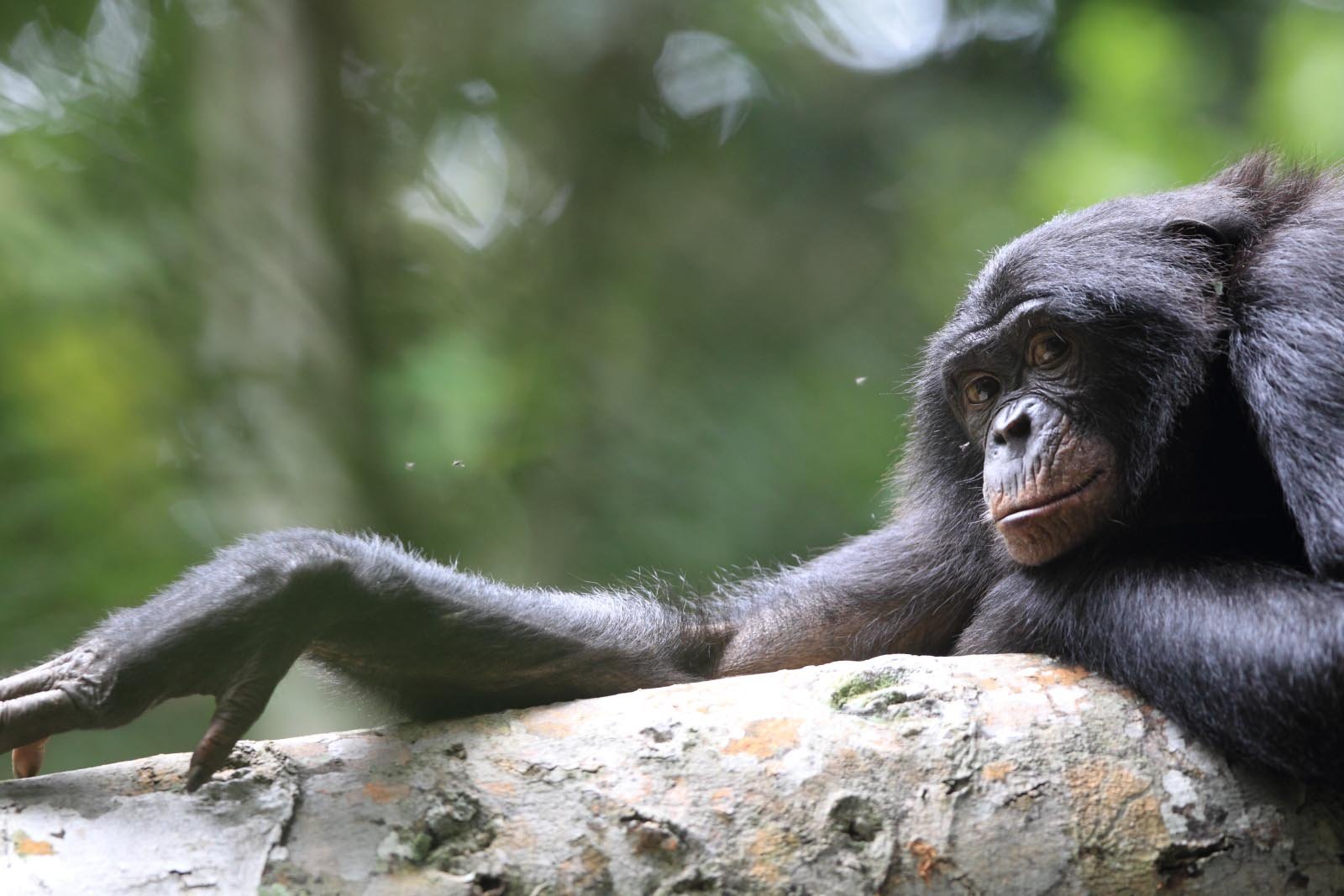
What about bonobos?
Photo © Kokolopori Bonobo Research ProjectNo creature on Earth is more closely related to humans than the bonobo. Sharing almost 99% of our DNA, bonobos are truly our sister species.
Chimpanzees, our other closest relatives, are noted for their male-dominant, aggressive behaviors; bonobos present a very different paradigm, a harmonious society built on cooperation, trust, and female power. Bonobos are…
Photo © Liz Rubert-Pugh, Bonobo Hope
intelligent
Kanzi, the world’s most famous bonobo, learned to communicate with humans using symbols called lexigrams under the tutelage of Dr. Sue Savage-Rumbaugh. He has mastered over 300 of them, and understands up to 3000 spoken words.
Photo © Roland Hilgartner
empathetic
Bonobos are keen observers of the emotional states of others. They comfort distressed friends with hugs and other signs of affection, just like we do.
Photo © Christian Ziegler, National Geographic
matriarchal
Unique among great apes, bonobo society revolves around the females and female-based relationships. Rather than a strict hierarchy led by an alpha male, bonobo groups are led by ranking females and are more egalitarian.
Photo © Christian Ziegler, National Geographic
peaceful
Both within and between groups, bonobos tend to resolve conflict through affection rather than aggression. Unlike many other animals, bonobos are neither territorial nor hostile to strangers. When two bonobo groups encounter each other, they will frequently share food and engage in intimate behaviors.
Photo © Christian Ziegler, National Geographic
playful
Bonobos love to play, whether it’s a game of chase with friends or exploring their environment on their own. They even laugh when they’re tickled! In the wild, bonobos are imaginative problem-solvers. In captivity, some bonobos have proven to be talented painters and musicians.
Photo © Roland Hilgartner
loving
Bonobos are sometimes referred to as the “Make Love, Not War” apes. They are famous for their creative and wide-ranging sexual activities. Sexual contact goes far beyond reproduction and is used for social bonding, pleasure, play, greeting, and conflict resolution. Bonobos partner without regard to age, sex, number, or reproductive status.

…and endangered!
As few as 15,000 bonobos remain today; the entire population would not even fill Madison Square Garden. Bonobos face imminent extinction unless we scale up efforts to protect them from poachers and secure their habitat from destruction.
Photo © Christian Ziegler, National Geographic

Discover more about these amazing apes and how we can ensure their survival.
Part I - Bonobo Conservation Initiative talks about bonobos.
Part II- Bonobo Conservation Initiative talks about bonobos.
Threats
Bonobos are classified as endangered on the IUCN Red List, facing a very high risk of extinction in the near future. For several reasons, it has been difficult to collect reliable population estimates of bonobos.
Sounds
Bonobos are the most vocal of the great apes, using their voices extensively to express themselves and to communicate with others. They tend to be relatively high-pitched and melodic, in contrast to the lower and more guttural “pant hoots” of chimpanzees.
Stories
Bonobos have been cherished, revered, and even feared, by the indigenous people of the Congo Basin. Legends about bonobos have perpetuated traditional taboos against hunting these uncommon apes.






